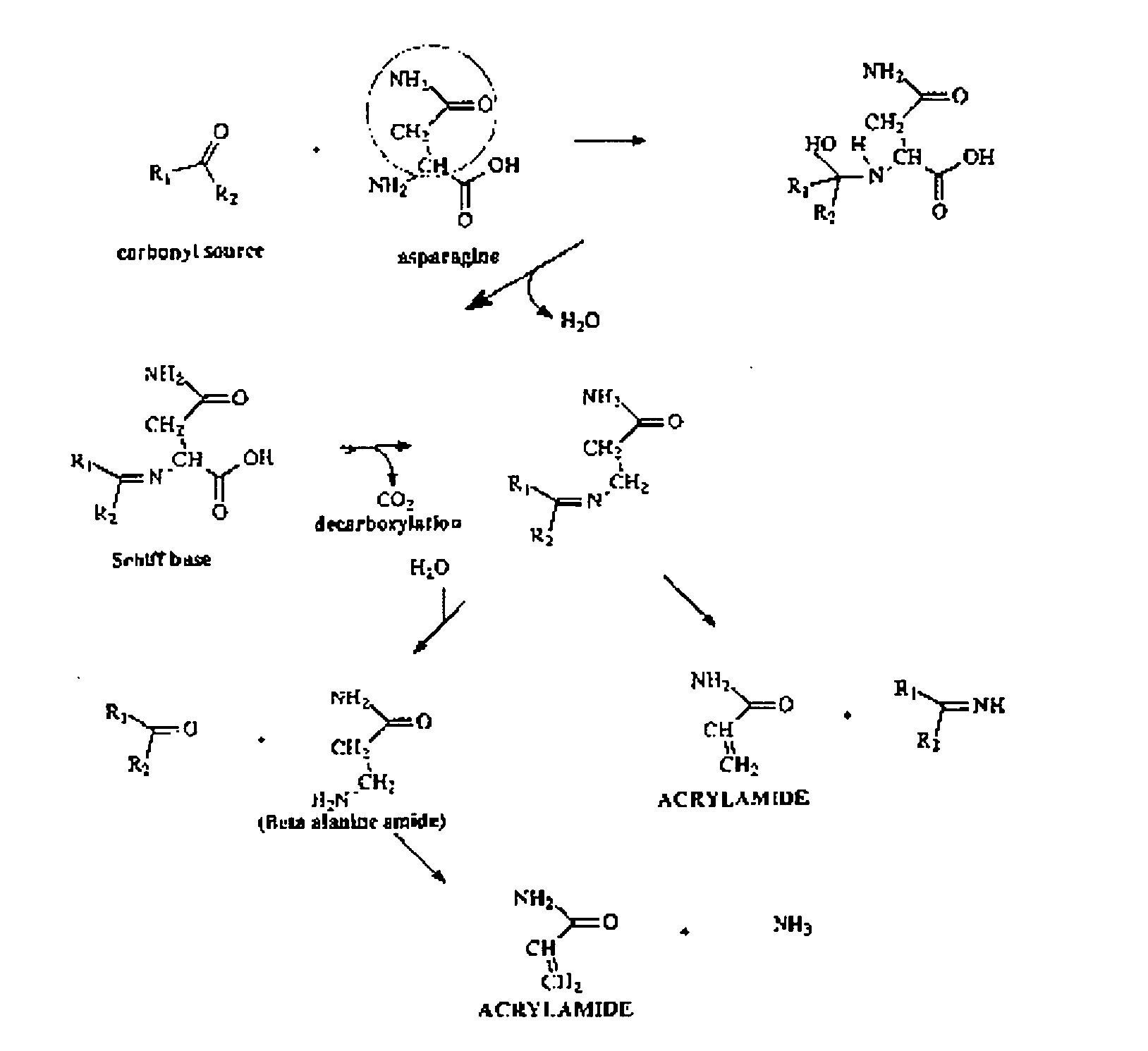Devices and methods for the rapid, reliable detection and determiniation of acrylamide concentration in food substances and prevention of acrylamide formation in the same
a technology of acrylamide and food substances, which is applied in the field of devices and methods for the rapid, reliable detection and determination of acrylamide concentration in food substances and the prevention of acrylamide formation in the same, can solve the problems of inability to adapt no prior art exists, and food matrices are not suited to the new method, etc., to reduce the concentration of reducing sugar, reduce the concentration of acrylamide, and eliminate or greatly reduce acrylamides
- Summary
- Abstract
- Description
- Claims
- Application Information
AI Technical Summary
Benefits of technology
Problems solved by technology
Method used
Image
Examples
Embodiment Construction
[0050] The description below is an example of how the concentration of acrylamide in a food substance could be measured calorimetrically using an aliphatic amidase, AmiE that can convert the acrylamide into ammonia or other nitrogen containing compounds. Similar techniques are also anticipated by this invention using other enzymes or techniques that may convert or degrade the acrylamide present in food into other chemical fragments that are easily and readily detectable by one of several techniques including calorimetric, pH change, temperature change, etc. Techniques where acrylamides may not have to be converted into other chemical fragments to be detected are also anticipated by this invention.
[0051] The gene for the aliphatic amidase, AmiE, from H. pylori is amplified by PCR and cloned into pUC19. Genes from P. aeruginosa, Rhodococcus sp. R312 or B. stearothermophilus encoding other short-chain amidases would work equally as well. The resultant plasmid is used to transform E. c...
PUM
| Property | Measurement | Unit |
|---|---|---|
| temperature | aaaaa | aaaaa |
| temperature | aaaaa | aaaaa |
| temperatures | aaaaa | aaaaa |
Abstract
Description
Claims
Application Information
 Login to View More
Login to View More - R&D
- Intellectual Property
- Life Sciences
- Materials
- Tech Scout
- Unparalleled Data Quality
- Higher Quality Content
- 60% Fewer Hallucinations
Browse by: Latest US Patents, China's latest patents, Technical Efficacy Thesaurus, Application Domain, Technology Topic, Popular Technical Reports.
© 2025 PatSnap. All rights reserved.Legal|Privacy policy|Modern Slavery Act Transparency Statement|Sitemap|About US| Contact US: help@patsnap.com

